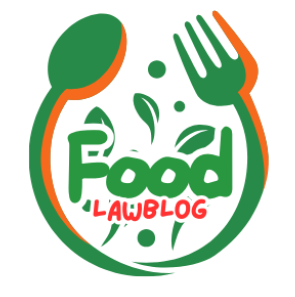Intro:
Dog and Cat Health Foods: Proper nutrition is the cornerstone of a long, healthy, and happy life for our pets. Just as with humans, the quality of the food our dogs and cats consume directly impacts their energy levels, immune system, coat condition, and overall well-being.
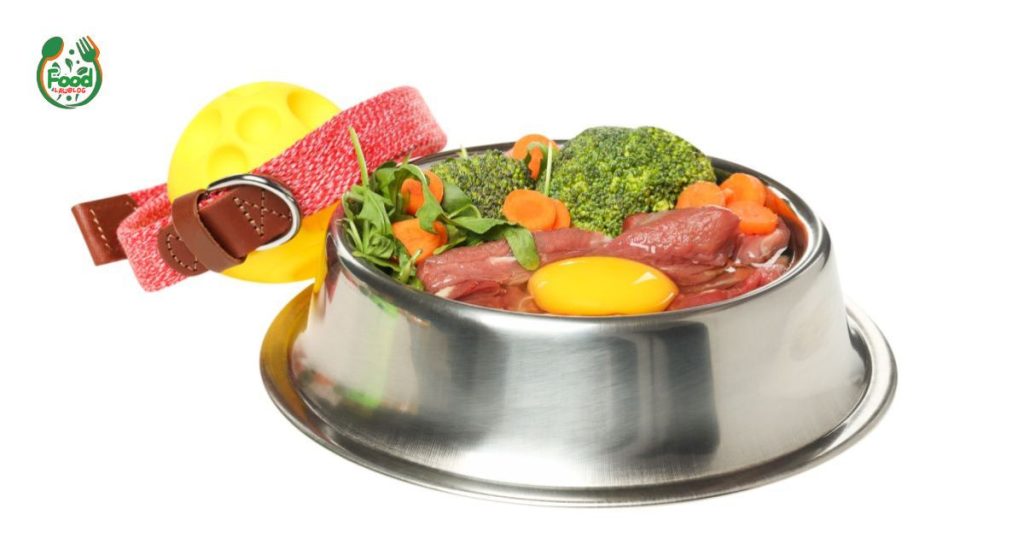
While many standard pet foods meet basic nutritional requirements, a growing number of pet owners are turning to premium health foods to provide their companions with superior, species-appropriate nutrition.
These advanced formulas often feature higher-quality ingredients, specialized nutrient profiles, and fewer fillers, offering a proactive approach to pet health.
Navigating the world of premium pet food can be overwhelming. Labels are complex, marketing claims are plentiful, and every brand promises the best for your furry family member. This comprehensive guide cuts through the noise.
We will explore what truly defines a premium pet health food, break down the science behind key ingredients, and reveal ten of the top-rated dog and cat health foods available today. Our goal is to empower you with the knowledge to make an informed decision that supports your pet’s vitality for years to come.
What Elevates Pet Food to “Premium”?
The term “premium” is not just a marketing buzzword; it signifies a higher standard in formulation, ingredient sourcing, and nutritional philosophy. Understanding these key differentiators is the first step toward choosing a truly beneficial food for your pet.
Hallmarks of High-Quality Pet Nutrition
Premium dog and cat health foods distinguish themselves from budget-friendly alternatives in several important ways.
- Superior Ingredient Sourcing: The foundation of any excellent pet food is the quality of its raw ingredients. Premium brands often prioritize named animal protein sources (like “deboned chicken” instead of “meat by-products”), whole grains or nutrient-dense carbohydrates, and identifiable fruits and vegetables. They may also emphasize non-GMO, organic, or human-grade ingredients, ensuring a cleaner, more wholesome meal.
- High-Quality Protein Content: Cats are obligate carnivores, and dogs are facultative carnivores. Both thrive on diets rich in animal-based protein. Premium formulas list a high-quality animal protein as the first ingredient, ensuring that the primary component of the diet supports muscle maintenance, enzyme function, and energy.
- Absence of Fillers and Artificial Additives: Lower-quality pet foods often use inexpensive fillers like corn, wheat gluten, and soy to bulk up the product. These ingredients offer limited nutritional value and can sometimes trigger allergies or digestive issues. Premium foods typically avoid these, along with artificial colors, flavors, and preservatives like BHA, BHT, or ethoxyquin, opting for natural preservatives like mixed tocopherols (Vitamin E) instead.
- Species-Appropriate Formulation: The nutritional needs of a cat are vastly different from those of a dog. Premium brands excel at creating species-appropriate diets. For cats, this means high protein, moderate fat, and very low carbohydrates, with essential nutrients like taurine. For dogs, formulas are often tailored to breed size, life stage, and activity level.
- Nutrient-Dense and Bioavailable: It’s not just about the ingredients listed, but how well your pet can absorb and utilize the nutrients. Premium foods are formulated for high digestibility and bioavailability, meaning more nutrients are absorbed into the bloodstream and less passes through as waste. This is often achieved through advanced cooking processes and the inclusion of chelated minerals and probiotics.
Reading and Understanding Pet Food Labels
To identify a premium food, you must become adept at reading the label. Look beyond the flashy graphics on the front of the bag and focus on the two most important sections: the ingredients list and the guaranteed analysis.
The Ingredient List
Ingredients are listed by weight, from heaviest to lightest, before cooking. This means the first few ingredients make up the bulk of the food.
- Look for: A named, whole animal protein source as the first ingredient (e.g., “Deboned Salmon,” “Pasture-Raised Lamb”).
- Be cautious of: Vague terms like “meat and bone meal” or “poultry by-product meal.” While not always harmful, they are less transparent and can be of variable quality. Also, watch for “ingredient splitting,” where a lower-quality ingredient like corn is listed in multiple forms (“ground corn,” “corn gluten meal”) to push it down the list.
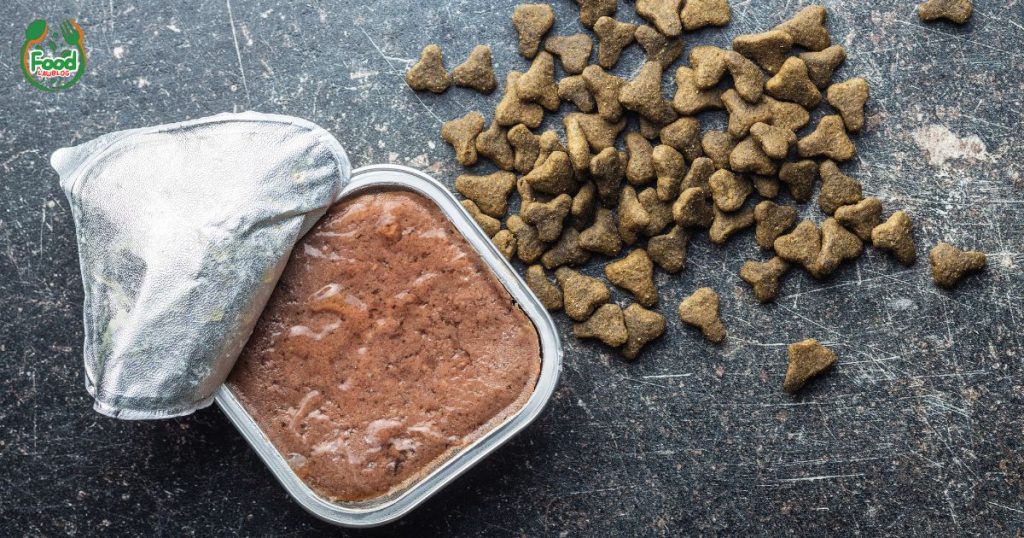
The Guaranteed Analysis
This chart lists the minimum percentages of crude protein and crude fat, and the maximum percentages of crude fiber and moisture.
- Protein and Fat: For cats, look for high protein (typically 30% or more) and moderate fat. For dogs, these levels will vary by life stage and activity, but active dogs benefit from higher protein and fat.
- Fiber: A moderate amount of fiber (around 3-5%) is good for digestive health.
- Moisture: Dry kibble typically has around 10% moisture, while wet food has 75% or more. This is crucial for cats, who have a low thirst drive and benefit from the hydration provided by wet food.
10 Premium Dog and Cat Health Foods Revealed
This list highlights ten brands that consistently exemplify the principles of premium pet nutrition. We have selected a variety of food types—including dry kibble, wet food, and alternative formats—to cater to different pet needs and owner preferences.
1. Orijen: The Pinnacle of Biologically Appropriate Nutrition
Why it’s premium: Orijen, made by Champion Petfoods, is a leader in the “Biologically Appropriate” food movement. Their philosophy is to mirror the diet that dogs and cats evolved to eat in the wild.
- Key Features: Orijen formulas boast an exceptionally high inclusion of fresh and raw animal ingredients, often up to 85-90%. They use a “WholePrey” ratio, incorporating not just meat but also organs and cartilage to provide a complete nutrient profile naturally. Their ingredient lists are impressive, featuring free-run poultry, nest-laid eggs, ranch-raised meats, and wild-caught fish.
- For Dogs: Orijen Original for dogs is packed with protein from chicken, turkey, and fish, making it ideal for active dogs of all life stages.
- For Cats: Orijen Cat & Kitten food is a carnivore’s dream, with a protein content often exceeding 40%. It’s designed to support lean muscle mass and peak physical conditioning.
- Considerations: The high protein and rich nature of Orijen can be too much for some pets, especially seniors or those with sensitive stomachs. A slow transition is essential. It is also one of the most expensive brands on the market.
2. Acana: Champion Petfoods’ Accessible Excellence
Why it’s premium: Also from the makers of Orijen, Acana shares the same Biologically Appropriate philosophy and commitment to fresh, regional ingredients but at a slightly more accessible price point.
- Key Features: Acana recipes typically contain 50-75% quality animal ingredients. They offer a wider variety of formulas, including single-protein-source diets (Acana Singles) for pets with food sensitivities and grain-inclusive options (Acana Wholesome Grains) for those who do well with grains.
- For Dogs: The Acana Red Meat Recipe, featuring ranch-raised beef, Yorkshire pork, and grass-fed lamb, is a popular choice for its palatability and rich nutrient profile.
- For Cats: Acana Bountiful Catch is a fish-lover’s delight, loaded with wild-caught salmon, herring, and hake to provide omega fatty acids for a healthy coat.
- Considerations: Like Orijen, the richness can be a factor for some pets. However, the diverse range of formulas makes it easier to find a suitable match.
3. Wellness CORE: Grain-Free, Protein-Focused Power
Why it’s premium: Wellness has built a reputation for thoughtful, science-backed nutrition. Their CORE line is a protein-focused, grain-free family of recipes that prioritizes animal proteins.
- Key Features: Wellness CORE recipes are known for their balanced approach. They combine high-quality proteins with a unique blend of superfoods, antioxidants, and probiotics to support whole-body health. They offer a huge variety of formats, including dry kibble, wet pates, chunky stews, and raw-infused options.
- For Dogs: The Wellness CORE Original Deboned Turkey recipe is a classic choice, providing balanced nutrition for adult dogs. Their Small Breed formulas are also excellent, with appropriate kibble size and calorie density.
- For Cats: Wellness CORE Signature Selects Flaked Skipjack Tuna & Wild Salmon is a wet food that provides essential hydration and tantalizes picky eaters with its shredded texture and real fish broth.
- Considerations: While their grain-free lines are most famous, Wellness also offers excellent grain-inclusive options (Wellness Complete Health) for pet owners who prefer them.
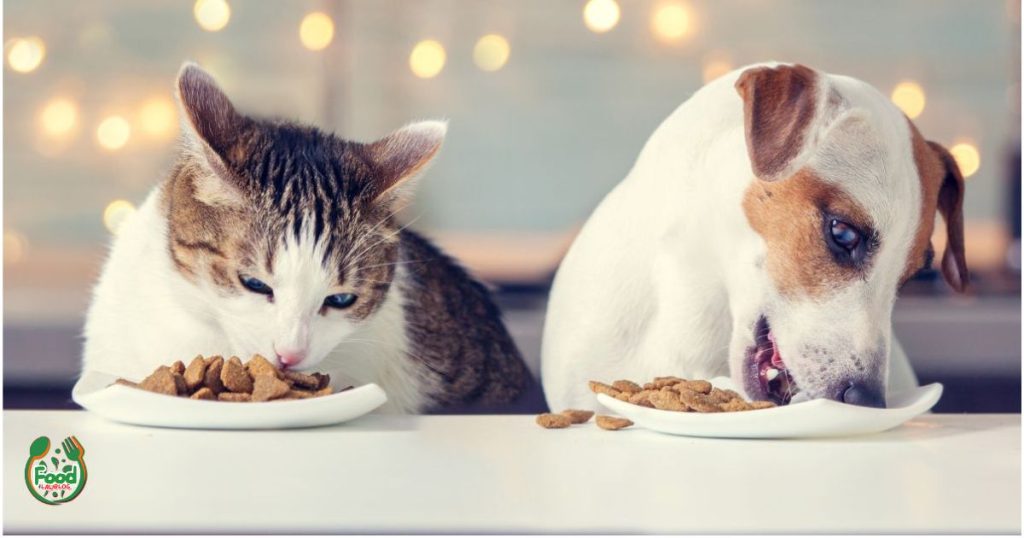
4. Fromm Family Foods: A Legacy of Quality and Safety
Why it’s premium: Fromm is a fifth-generation family-owned company with a stellar reputation for safety and quality control. They manufacture their food in their own facilities in Wisconsin, giving them complete oversight of the production process.
- Key Features: Fromm is famous for its “Four-Star Nutritionals” line, which features a variety of interchangeable recipes designed to provide dietary diversity. This rotational feeding can help prevent the development of food allergies. Their Gold and Classic lines offer more traditional life-stage and breed-size formulas. They also pioneered the use of a multi-grain blend (oatmeal, barley, brown rice) in their popular Gold recipes.
- For Dogs: Fromm Gold Adult Dog Food is a go-to for many discerning owners. It features chicken, duck, and lamb, along with cheese and salmon oil, creating a highly palatable and nutritionally complete meal.
- For Cats: Fromm Four-Star Surf & Turf is a grain-free kibble featuring salmon, duck, and chicken that appeals to the feline palate while supporting skin and coat health.
- Considerations: Fromm’s focus on safety and family ownership resonates with many pet parents. Their products are not as widely available as some mega-brands, often being sold in independent pet specialty stores.
5. Stella & Chewy’s: The Raw Food Revolution
Why it’s premium: Stella & Chewy’s has been at the forefront of making raw feeding safe, convenient, and accessible. They believe that a minimally processed, raw diet is the most species-appropriate option for dogs and cats.
- Key Features: Their flagship products are freeze-dried raw dinner patties and meal mixers. The freeze-drying process removes moisture, making the raw meat shelf-stable while preserving its nutrients and enzymes. All meats are grass-fed, cage-free, or wild-caught, and recipes are fortified with organic fruits and vegetables. They also offer baked kibble and wet food options.
- For Dogs: The Stella & Chewy’s Freeze-Dried Raw Dinner Patties (like the Chewy’s Chicken Dinner) can be served as a complete meal (when rehydrated) or used as a topper to boost the nutrition of regular kibble.
- For Cats: Their Chick Chick Chicken Dinner Morsels are a hit with felines, providing the high-protein, low-carb diet they crave. The freeze-dried texture is also unique and engaging for many cats.
- Considerations: Raw diets are a subject of debate, with proponents praising their health benefits and critics citing risks of bacterial contamination. Stella & Chewy’s mitigates this risk with a high-pressure processing (HPP) step to eliminate harmful pathogens. This food type is also on the higher end of the price spectrum.
6. The Honest Kitchen: Dehydrated, Human-Grade Goodness
Why it’s premium: The Honest Kitchen was a pioneer in the human-grade pet food category. Their foods are made in a human food facility with 100% human-grade ingredients, setting a new standard for quality and safety.
- Key Features: Instead of kibble, The Honest Kitchen produces dehydrated food. You simply add warm water to the mix, wait a few minutes, and serve a warm, fresh meal. This gentle dehydration process preserves more of the natural nutrients compared to high-heat extrusion used for kibble. Their recipes are a mix of finely diced and minced meats, vegetables, and fruits.
- For Dogs: The Honest Kitchen Human Grade Dehydrated Grain Free Chicken Recipe is one of their original and most popular formulas, suitable for all life stages.
- For Cats: Their Grain-Free Turkey & Chicken Recipe for cats provides a high-protein, low-carb meal in a format that helps with hydration.
- Considerations: The prep time, while minimal, is a change for those used to scooping kibble. Some pets may also need time to adjust to the different texture. The “human-grade” claim is legally defined and strictly regulated, offering a high level of trust.
7. Weruva: Hydration-Focused, High-Quality Wet Food
Why it’s premium: Weruva focuses almost exclusively on canned wet food, making hydration and palatability their top priorities. They are especially popular in the cat community, where a moisture-rich diet is critical for urinary tract health.
- Key Features: Weruva’s foods look like they could be on a human’s plate. They use whole cuts of shredded chicken, chunks of fish, and identifiable vegetables in gravy or aspic. Their formulas are free of carrageenan, a common thickener that some link to inflammation. They produce their foods in human-grade facilities.
- “For Dogs: Their “Dogs in the Kitchen” line offers pups a taste of the good life with recipes like Lamburgini, featuring lamb and pumpkin in a savory gravy.
- For Cats: Weruva’s Paw Lickin’ Chicken is a classic. It’s simple, high-quality shredded chicken in gravy, perfect for picky cats and those needing extra moisture in their diet. Their “Cats in the Kitchen” line offers a huge variety of textures and proteins.
- Considerations: An all-wet-food diet can be more expensive than kibble and may require more attention to dental health. Weruva is an excellent choice for supplemental feeding or for pets who need to increase their water intake.
8. Dr. Elsey’s cleanprotein™: Veterinarian-Formulated, Low-Carb Kibble
Why it’s premium: Developed by a feline-only veterinarian, Dr. Bruce Elsey, this brand is laser-focused on creating a kibble that mimics a cat’s natural prey-based diet.
- Key Features: Dr. Elsey’s Cleanprotein™ boasts one of the highest protein and lowest carbohydrate levels of any dry cat food on the market. Over 90% of the protein comes from animal sources like chicken, pork, and gelatin. The formula is designed to promote a healthy body mass and satisfy a cat’s carnivorous needs, potentially reducing the risk of obesity and diabetes.
- For Cats: The Chicken Recipe Formula is their cornerstone product. It’s an excellent option for owners who want the convenience of kibble but the nutritional profile closer to a canned or raw diet.
- For Dogs: While the brand is cat-centric, they have recently expanded to include a Cleanprotein™ dog food with similar principles.
- Considerations: This is a highly specialized, niche product. Its high price and vet-focused formulation appeal to owners dealing with specific health concerns or those deeply invested in carnivore-appropriate nutrition.
9. Ziwi Peak: Air-Dried Nutrition from New Zealand
Why it’s premium: Ziwi Peak combines the nutritional benefits of a raw diet with the convenience of a scoop-and-serve food through its unique air-drying process.
- Key Features: Sourced and made entirely in New Zealand, Ziwi Peak uses ethically and sustainably sourced meats, poultry, and fish. Their recipes contain up to 96% meat, organs, bone, and New Zealand Green Mussels, a natural source of glucosamine and chondroitin for joint health. The gentle, twin-stage air-drying process eliminates pathogens while preserving the nutrients and natural flavor of the raw ingredients.
- For Dogs and Cats: Ziwi Peak offers parallel lines for both species. The Air-Dried Mackerel & Lamb recipe is a nutrient-dense option rich in Omega-3s. The food is calorically dense, so feeding amounts are much smaller than traditional kibble.
- Considerations: Ziwi Peak is one of an elite few ultra-premium foods and its price reflects that. The small feeding portions can be surprising at first, but it is a complete and balanced meal. The jerky-like texture is unique and highly palatable for most pets.
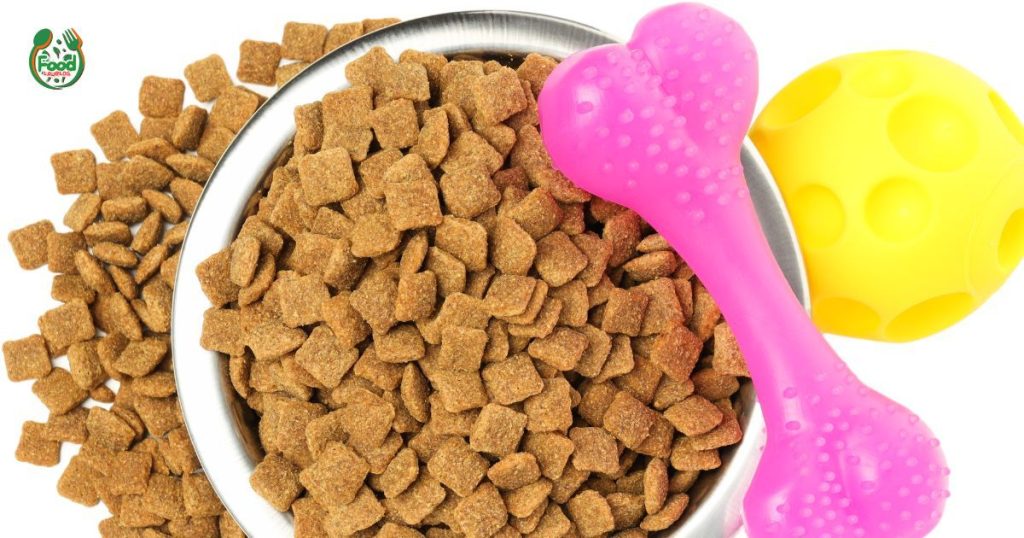
10. Instinct: The Bridge Between Kibble and Raw
Why it’s premium: Instinct (formerly Nature’s Variety Instinct) is a brand that skillfully bridges the gap between traditional kibble and raw food.
- Key Features: Their most popular line is “Instinct Be Natural,” a high-quality, grain-inclusive or grain-free kibble. What sets them apart is their “Raw Boost” line, which takes that kibble and mixes in freeze-dried raw pieces. This provides a nutritional and palatability boost without requiring a full switch to a raw diet. They also offer full-fledged frozen and freeze-dried raw meals.
- For Dogs: The Instinct Raw Boost with Real Chicken is a fantastic entry point for owners curious about raw feeding. It offers the convenience of kibble with a powerful nutrient kick.
- For Cats: The Instinct Original Grain-Free Recipe with Real Rabbit for cats is a popular choice for felines with poultry sensitivities, offering a novel protein in a high-quality, protein-rich kibble.
- Considerations: Instinct provides a flexible system. You can use their standard kibble, upgrade to Raw Boost, or go for their full raw diets, allowing you to find the right balance of nutrition, convenience, and cost for your lifestyle.
Frequently Asked Questions (FAQ)
Q1: Are grain-free pet foods better for my dog or cat?
This is one of the most common questions in pet nutrition. For cats, who are obligate carnivores, a low-carbohydrate, and therefore often grain-free, diet is generally considered more species-appropriate. For dogs, the answer is more nuanced. Some dogs have genuine sensitivities or allergies to grains like wheat or corn and do much better on a grain-free diet.
However, most dogs can digest and utilize the nutrients in quality whole grains like oatmeal, brown rice, and barley perfectly well. In recent years, the FDA has investigated a potential link between certain grain-free diets (often those high in legumes like peas and lentils) and a heart condition called dilated cardiomyopathy (DCM) in dogs. The science is still evolving. If you are concerned, choosing a grain-inclusive formula from a premium brand like Fromm or Acana Wholesome Grains, or consulting your veterinarian, is a wise choice.
Q2: How do I switch my pet to a new premium food?
A slow and gradual transition is crucial to avoid digestive upset. Start by mixing a small amount of the new food (about 25%) with your pet’s old food (75%). Over the course of 7 to 10 days, gradually increase the proportion of the new food while decreasing the old food. On day one, you might feed 75% old and 25% new. By day four, you can move to a 50/50 mix. By day seven, you can try 25% old and 75% new, and finally transition to 100% of the new food. Monitor your pet’s stool quality and energy levels throughout the process. If you notice any vomiting or diarrhea, slow down the transition.
Q3: Is wet food or dry food better for my pet?
Both wet and dry food can be excellent choices, and the “better” option depends on your pet’s individual needs.
- Dry Food (Kibble): Is convenient, cost-effective, and can have some benefits for dental health due to the abrasive action of chewing. It is also more calorie-dense.
- Wet Food (Canned): Has a very high moisture content, which is excellent for hydration, particularly for cats who are prone to urinary tract issues. It is often more palatable for picky eaters and is lower in carbohydrates.
Many experts recommend a combination of both. Using a high-quality kibble as a base and supplementing with wet food can provide the benefits of both formats.
Q4: What does “human-grade” mean on a pet food label?
“Human-grade” is a legally defined term regulated by AAFCO (The Association of American Feed Control Officials). For a pet food to be labeled as human-grade, every ingredient in the recipe and the final product itself must be stored, handled, processed, and transported in a manner that is compliant with the regulations for human edible foods. This is a very high standard that few companies, like The Honest Kitchen, meet. It provides an exceptional level of assurance regarding ingredient quality and facility safety.
Q5: Are expensive premium pet foods really worth the cost?
While the upfront cost of premium pet food फोन is higher, many owners view it as a long-term investment in their pet’s health. A high-quality, nutrient-dense diet can lead to a stronger immune system, better digestion, a healthier skin and coat, and more consistent energy levels. Over the lifetime of a pet, this can potentially translate to fewer vet visits for diet-related issues like allergies, digestive problems, and obesity. Furthermore, because premium foods are more nutritionally dense, feeding portions are often smaller, which can slightly offset the higher price per bag. The ultimate value lies in the peace of mind that comes from providing your pet with the best possible nutritional foundation for a long and vibrant life.
<script type="application/ld+json">
{
"@context": "https://schema.org",
"@type": "BlogPosting",
"mainEntityOfPage": {
"@type": "WebPage",
"@id": "https://foodlawblog.com/"
},
"headline": "10 Best Dog and Cat Health Foods Revealed",
"description": "Dog and Cat Health Foods: Proper nutrition is the cornerstone of a long, healthy, and happy life for our pets. Just as with humans, the quality of the food our dogs and cats consume directly impacts their energy levels, immune system, coat condition, and overall well-being.",
"image": "https://foodlawblog.com/wp-content/uploads/2025/10/dog-and-cat-health-food-4.jpg",
"author": {
"@type": "Person",
"name": "Habibur Rahman",
"url": "https://foodlawblog.com/about-us/"
},
"publisher": {
"@type": "Organization",
"name": "Habibur Rahman",
"logo": {
"@type": "ImageObject",
"url": "https://foodlawblog.com/wp-content/uploads/2025/10/cropped-cropped-cropped-latest.png"
}
},
"datePublished": "2025-10-26",
"dateModified": "2025-10-26"
}
</script>